RoofKIT wins 1st in out-of-competition category “Sustainable Architectural Lighting Award” at Solar Decathlon Europe 21/22 in Wuppertal
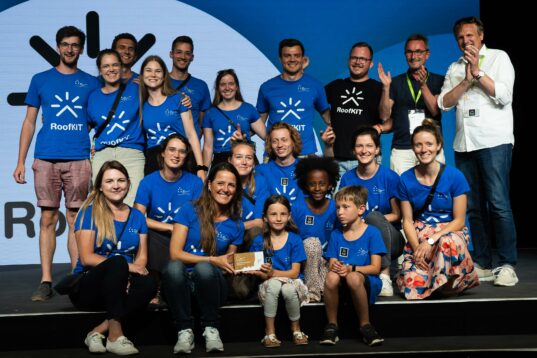
Our thanks go to the Kaufmann Zimmerei and Tischlerei in Reuthe, Austria and to the Timber Construction Award Jury.
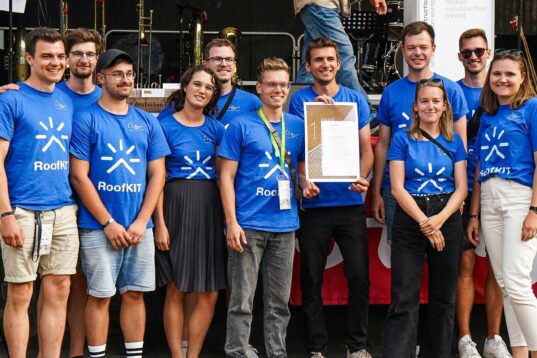
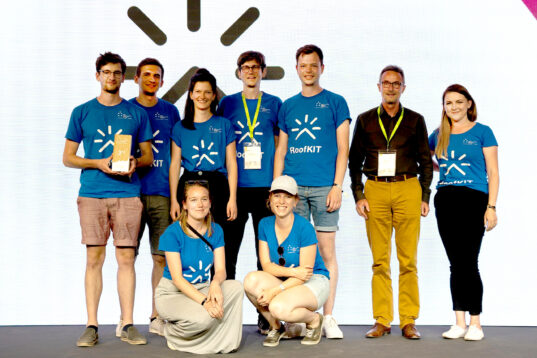
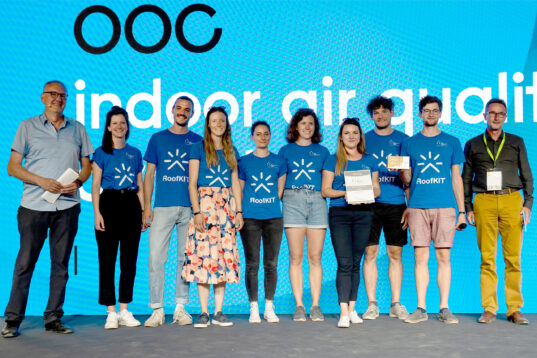
The TECU® ARCHITECTURE AWARD 2022 once again honours outstanding projects that make exemplary and innovative use of the extensive application possibilities of the TECU® brand. The overall architectural concept and the considered use of the material are decisive. The competition includes the category ‘Realised Buildings’ and ‘Project award for students’.
Regina Gebauer, meanwhile teaching and research assistant at the Professorship of Sustainable Construction, won the 1st project prize for students with her design project “Until everything moves”. In this project, she proposes the addition of two residential storeys to the existing Café ADA in the Mirker Quarter in Wuppertal, which was part of the Solar Decathlon teaching achievements over the past two years at the KIT Faculty of Architecture. The award ceremony took place on 17 June at the Solar Decathlon Europe in Wuppertal.
On Sunday 12th the Award Ceremony of the first “Out Of Competition Award” has taken place at the Solar Campus. Team RoofKIT ist very happy that the fist day of Award Ceremonies also brought the first trophy – The inhabitants of the Wuppertal neighborhood of Mirke, where the proposed plots of the SDE 21/22 are located, voted RoofKIT second place of the “Mirke Choice Award”. The team is especially proud that the proposal for topping up the Café ADA in the heart of the neighborhood is appreciated by the people it was designed for.
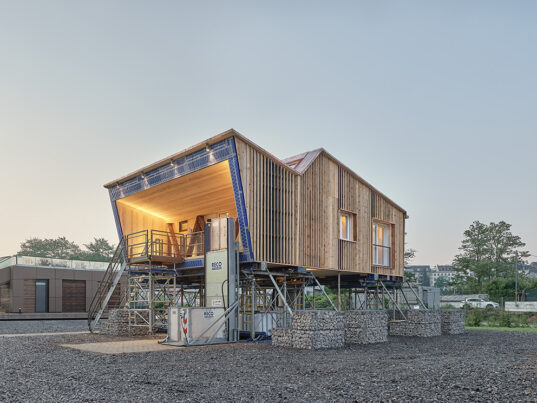
The Karlsruhe Institute of Technology is participating in the 2021/22 Solar Decathlon Competition in Wuppertal, Germany with its project RoofKIT. Designed as a top-up to an existing structure of the 19th century in the old city fabric, it demonstrates a vision for the building industry: social adequate, energy positive and circular sustainable.
It is the unique character of the Solar Decathlon competition, that next to an overall design approach of a larger project, a characteristic element is constructed as a full scale demonstrator. Since 2020, more than 100 students from KIT within different faculties and under the leadership of the professorships of Sustainable Construction (Prof. Dirk E. Hebel) and Building Technologies (Prof. Andreas Wagner) worked on the project which cumulated in the construction of the House Demonstration Unit in May and June 2022 in Wuppertal, Germany.
Designed as a prefabricated module system with a 100% circular construction method, the unit proofs already today, that with current technology and design capacities, we are able to fulfill the requirements of the European Green Deal. No glues, no paints, no foams or wet sealants were used, so that the circularity of the building and its materials is guaranteed. In addition, only mono-materials were used for construction, meaning no composites or mixtures of materials are to be seen.
But RoofKIT wants not only show what is possible in the future: many building components and materials are taken already out of the urban mine and are used in their second, third or even fourth circle: wood from old barns in the black forest, the entrance door from a building of the 19th century , windows from a demolished building in Basel, bathroom and kitchen sinks as well as fixtures from turn backs of fair exhibitions.
This circular approach only makes sense when it is powered by renewable energy. As the RoofKIT top-up is a new construction with a high energy efficiency standard, the total energy demand (including appliances and e-mobility) will be covered by solar systems on the building envelope. For solar harvesting PVT collectors are used which simultaneously provide electricity and heat, the latter serving as the source for a heat pump which feeds a floor heating system and hot water tank. The surface of the PV modules is colored with a special coating technology in order to merge with the copper roofing with almost no losses in efficiency. This important step is necessary to fully integrate solar panels into the design approach of future buildings. The overall light concept follows the idea of avoiding unnecessary fixtures where possible and using flexible hand-carried cable-free elements to illuminate only those areas where wanted. In addition, an artificial lighting system around the core delivers light with a luminous color adapted to the time of the day.
The unit sits on a scaffolding structure to demonstrate its character as a top-up design strategy. RoofKIT already today is a demonstrator for our future building culture and industry.
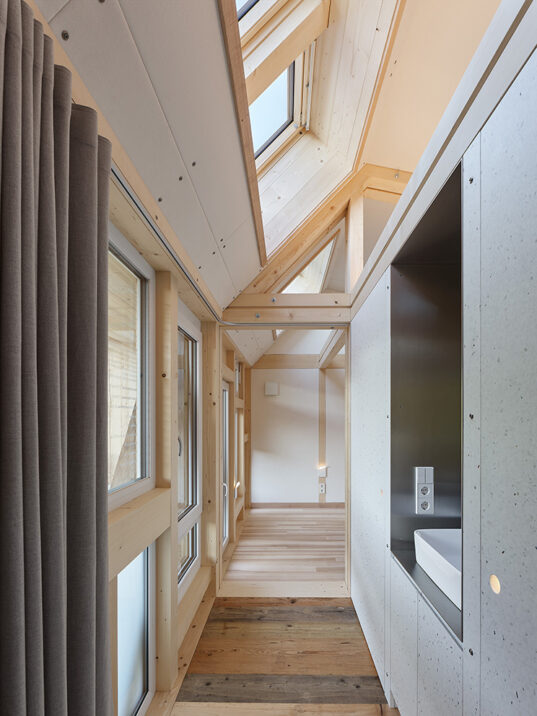
Project Credits:
Core student team KIT Karlsruhe: Patrick Bundschuh, Stefanie Christl, Luca Diefenbacher, Florian D’Ornano, Jonas Ernst, Dominic Faltien, Nadine Georgi, Aaron Harter, Johannes Hasselmann, Louis Hertenstein, Michael Hosch, Martin Kautzsch, Jennifer Keßler, Nicolas Klemm, Katharina Knoop, Sebastian Kreiter, Anne Lienhard, Michelle Montnacher, Fabian Moser, Friederike Motzkus, Jana Naeve, Saskia Nehr, Julian Raupp, Alexander Resch, Nicolas Salbach, Julian Schmidgruber, Natascha Steiner, Niels Striby, Dennis Sugg, Moritz Tanner, Sven Teichmann, Benjamin Weber, Vincent Witt, Immanuel Zeh
Project Leader: Regina Gebauer (Architecture) and Nicolás Carbonare (Building Technology)
Architectural Design: Faculty of Architecture, KIT Karlsruhe, Professorship of Sustainable Construction, Prof. Dirk E. Hebel, Regina Gebauer, Sandra Böhm, Katharina Blümke, Elena Boerman, Hanna Hoss, Philipp Jager, Daniel Lenz, Manuel Rausch, Daniela Schneider, Alireza Javadian, Nazain Saeidi, Elke Siedentopp with Michael Hosch, Benjamin Weber, Martin Kautzsch, Julian Raupp
Building Technology: Faculty of Architecture, KIT Karlsruhe, Professorship of Building Technologies, Prof. Andreas Wagner, Nicolás Carbonare, Isabel Mino Rodriguez with Martin Kautzsch (cooperative partners: Klaus Rohlffs, ip5 Karlsruhe; Prof. Jens Pfafferott, University of Applied Sciences, Offenburg; Martin Wortmann-Vierthaler, Heinrich-Meidinger-Berufsschule, Karlsruhe, David Wölfle, FZI Forschungszentrum Informatik)
Structural Design demonstration unit: 2hs Architekten und Ingenieur, Prof. Karsten Schlesier HCU Hamburg with Johannes Hasselmann and Jonas Benjamin Ernst
Structural Design circulation, foundation and safety elements: Faculty of Architecture, KIT Karlsruhe, Professorship of Structural Design, Prof. Riccardo La Magna, David Andersson
Structural Design scaffolding system: DOKA, Alexandra Sell und Markus Wientzek
Light Design: Faculty of Architecture, KIT Karlsruhe, Professorship of Building Technologies, Prof. Andreas Wagner, Luciana Alanis with Erik Hofmann and Maikel Hollstein
Urban Mobility: Faculty of Architecture, KIT Karlsruhe, Professorship of Urban Design, Prof. Markus Neppl, Peter Zeile with Nicolas Salbach and Daniel Lenz
Feasibility & Affordability, Life cycle Assessment: Faculty of Economics and Management, KIT Karlsruhe, Professorship of Sustainable Management of Housing and Real Estate, Prof. Thomas Lützkendorf, Daniel Rochlitzer with Regina Gebauer and Julian Schmidgruber
Material Library: Elena Boermann und Sandra Böhm mit Anna-Lena Kneip
Corporate Design and Communication: Philip Brücher, Nadine Georgi, Dominic Faltien, Lukas Großmann, Jennifer Keßler, Katharina Knoop, Michelle Montnacher, Saskia Nehr, Sanda Sandic, Natascha Steiner, Katharina Blümke, Daniel Lenz, Manuel Rausch
Fabrication demonstration unit: Kaufmann Zimmerei und Tischlerei, Reuthe, Bregenzerwald, Österreich, Matthias Kaufmann, Mario Meusburger with KIT students
Supported by: KIT Karlsruhe, German Ministry for Economic Affairs and Climate Action, Holzbauoffensive Baden-Württemberg, Energy Endeavour Foundation
Sponsoring Partners:

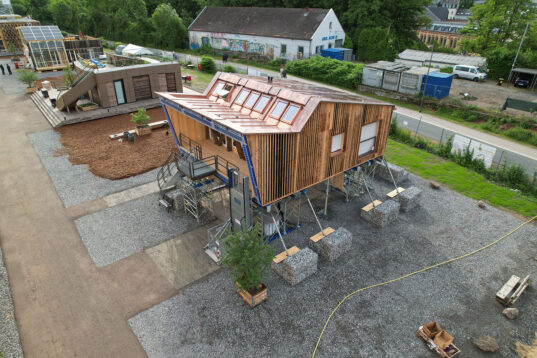
Since 18 May 2022, Team RoofKIT has been in Wuppertal to build the House Demonstration Unit on the Solar Campus of the Solar Decathlon Europe 2021/22. In the first week, the foundation was prepared, the scaffolding, steel beams and gabions were erected. Then the modules were delivered by Kaufmann Zimmerei und Tischlerei and assembled in one spectacular day. The second week was dominated by the paving and electrical work as well as the interior design of the unit. Finally, the building was professionally photographed by architectural photographers Zooey Braun and Carolin Wengert.
On 3 June 2022, Team RoofKIT received the final approval from the organisers of the Solar Decathlon just in time and thus 10 bonus points. This concludes the assembly phase and the monitoring phase is currently underway in Wuppertal.
The Solar Decathlon event will take place in Wuppertal from 10 to 26 June 2022. Visitors will experience future-oriented architecture and creative climate protection at first hand. Free entry tickets are now available online at tickets.sde21.eu.
The Solar Decathlon is the meeting place for all architecture lovers, construction experts, sustainability supporters and interior design fans. Visitors can expect a veritable treasure trove of environmentally friendly, affordable and appealing building and living ideas. Whether it’s a flat made of wood with a roof garden, a home with cellulose-based components from the 3D printer or creative upcycled furniture: sixteen fully functioning, furnished house prototypes are waiting to be visited.
Over 30 local and national event partners are organising the accompanying programme. Visitors can enjoy the many offers and activities on the Solar Campus in Wuppertal free of charge. Concerts, exhibitions, award ceremonies and an international culinary offer complete the programme.
Event program on the Solar Campus: https://sde21.eu/de/event/programme
Directions to the Solar Campus: https://sde21.eu/de/event/anfahrt
Get free event tickets now at tickets.sde21.eu.
More information about the RoofKIT project here.
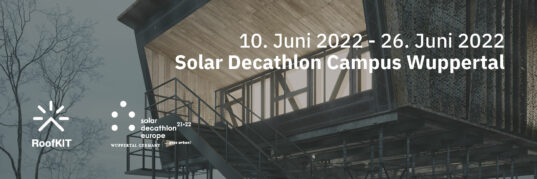
The exhibition shows, among other projects, student work from the design studio “Circularity – Architecture as a Mechanism of Waste Capture”, which took place in the winter semester 21/22 as part of Anupama Kundoo’s sto visiting professorship at KIT, Chair of Sustainable Building. Supervisors Prof. Dr. Anupama Kundoo and Daniel Lenz.
The exhibition can bee seen until September 30th in Roca Gallery Barcelona http://www.rocabarcelonagallery.com/expositions/anupama-kundoo-co-creation-architecture-is-collaboration
All Photos (c) Roca Gallery Barcelona
In order to drive the transformation of the construction and real estate industry towards more sustainability, researchers, young founders and companies are in demand: With the Sustainability Challenge, the DGNB seeks out pioneers who think boldly into the future, question existing systems and initiate new ideas.
In the “Research” category, the project “NEWood – a novel mycelium-based composite made from organic waste” from the KIT Professorship of Sustainable Construction was chosen as one of the three finalists.
The research project is based on three main strategies, which include resource efficiency, circular economy and renewable materials. A new class of bio-based, resource-efficient and CO2-negative materials called “NEWood” has emerged from the project. As NEWood shows comparable properties to MDF (Medium Density Fibre) and chipboard, it serves as a substitute for wood and wood-based materials. The wood alternative is developed exclusively from available organic waste, including wood and agricultural waste, and is produced using fungal mycelium as a natural binder. In cooperation with an industrial partner, the Karlsruhe Institute of Technology team is also exploring the use of digital and advanced manufacturing technologies in the development of mycelium-based composites.
The research project has also been published in Nature as well as in the Sendung mit der Maus and another children’s programme on KIKA.
The public votings for the finalists will be open from 31st May 2022.
As part of a team meeting, the RoofKIT team prepared for the Solar Decathlon competition in Wuppertal in the courtyard of the department of architecture.
The student team leader Regina Gebauer hosted the evening. Topics addressed included the assembly and disassembly phase, as well as work shifts, accommodation and the event phase.
The event ended with a wine tasting with an associated evaluation with regard to the dinner evening.
Photos © Katharina Blümke
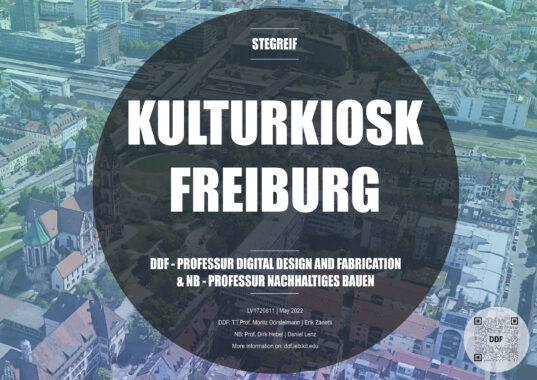
Stühlinger Kirchplatz is a small park in the center of Freiburg. A well-known meeting point for the whole community and a venue for diverse events, it is also a place of conflict due to drug dealing and excessive alcohol consumption.
An initiative by local social and cultural associations aims to establish a small multifunctional building or object as a starting point for a positive and integrated development of the whole park.
Developing a concept for this “Kulturkiosk”, addressing the social cultural context with sustainable construction and digital design, will be the focus of the Stegreif.
The Stegreif is a collaboration between the Professur Nachaltiges Bauen, Professur Digital Design and Fabrication and “Schwere(s)Los! e.V.”.
(de)
Der Stühlinger Kirchplatz im Zentrum Freiburgs ist ein beliebter Treffpunkt für das gesamte Quartier, andererseits ist er aufgrund von Drogenhandel und übermäßigem Alkoholkonsum ein Ort des Konflikts.
Eine Initiative lokaler sozialer und kultureller Vereine zielt darauf ab, ein kleines multifunktionales Gebäude oder Objekt als Ausgangspunkt für eine positive Entwicklung des gesamten Parks zu schaffen.
Die Entwicklung eines Konzepts für diesen “Kulturkiosk”, das den soziokulturellen Kontext mit nachhaltigem Bauen und digitalem Design verbindet, wird im Mittelpunkt des Stegreif stehen.
Der Stegreif ist eine Zusammenarbeit zwischen der Professur Nachaltiges Bauen, der Professur Digital Design and Fabrication und “Schwere(s)Los! e.V.“.
Ausgabe Stegreif: 11.05.2022, 10:00 Uhr – Geb. 20.40, Raum 136 (Fakultätszimmer)
Betreuungen: 11./18.05.2022
Abgabe: 25.05.2022
On 29 April, the Chair of Sustainable Construction was a guest at the Centre for Art and Media (ZKM) Karlsruhe to organise, in cooperation with the Faculty of Architecture, PINK Event Service, mint Café, Campusradio Karlsruhe and many more, the 3rd Symposium for Sustainable Construction “sustain.build.repeat. – building stock as the resource of the 21st Century”.
Invited speakers were Tina Kammer, Kerstin Müller, Thomas Auer, Daniel Fuhrhop, Dominik Campanella, Roland Gruber and Philippe Block. The panel discussions were moderated by Monica Tusinean, who was assisted by Elena Boerman with audience questions. Prof. Dirk E. Hebel guided the audience through the event.
Around 100 participants were present at the ZKM, and many viewers also followed the event online. Parallel to the event, we recorded a podcast with our speakers to further elaborate on the content of the presentations.
We would like to sincerely thank all those involved in the event for their commitment and organisational efforts, for the great encounters, conversations and new connections that were created at and through the symposium. Thank you!
>>> Registration for the live event at ZKM expired on 21st April 2022
>>> Livestream openly available (without prior registration)
>>> Please register here after the event for Educations Points of the Architektenkammer BW
Our 3rd Symposium on Sustainable Construction at a glance:
date: 29th April 2022 from 10AM to 5PM (admission from 9AM)
location: ZKM Medientheater Karlsruhe, registration expired
livestream: The event will be livestreamed openly and without registration on changelab.exchange
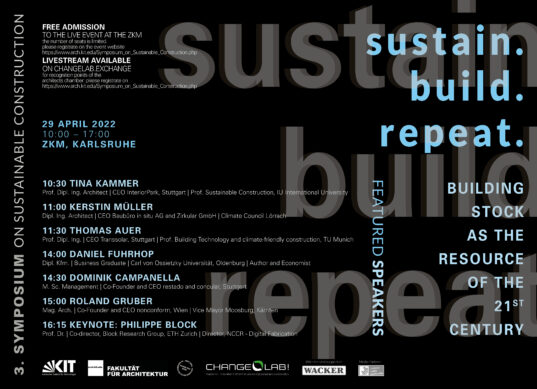
The symposium sustain.build.repeat. is dedicated to the resource of the 21st century: our building stock. With growing waste volumes and ever scarcer raw materials, careless building demolitions and replacements must be avoided. Instead, existing buildings should be converted and rebuilt, components removed, reused and reused again.
It is important to preserve as much of the existing building stock as possible on the premise of resource- and climate-friendly architecture: on the one hand as a changeable space in which various usage scenarios are possible, and on the other hand as a material depot and secondary raw material supplier. Representatives from science and industry, research and practice will present ideas, strategies and impulses on how the ecological necessity of reconstruction and transformation of the existing can become an enriching element of a caring, needs-oriented and value-preserving architecture in ecological balance.
We are very pleased to welcome the following speakers to our event:
Thomas Auer, Philippe Block, Dominik Campanella, Daniel Fuhrhop, Roland Gruber, Tina Kammer, and Kerstin Müller.
Additionally, a thematic introduction will be given by Prof. Dirk Hebel, Professor of Sustainable Construction and Dean of the Department of Architecture, the panel discussions between the lectures will be moderated by Monica Tusinean. In the foyer in front of the Medientheater, there will be an accompanying exhibition of student works that deal with the preservation of existing stock.
The event is organised by the Professorship of Sustainable Construction of the KIT Department of Architecture. The symposium is part of ChangeLab, an innovation platform for sustainability in the building industry, sponsored by Wacker Chemie AG.
The event and the livestream will also be part of the education programme of the Architektenkammer Baden-Württemberg (AKBW registration number: 2022-151695-0001). In order to receive training points for participation in the livestream, it is absolutely necessary to verify participation in the form provided AFTER the event on arch.kit.edu.
Admission to the ZKM will begin at 9AM on the event day. The symposium will start at 10 am and last until 5pm. A get together and guided tours of the current ZKM exhibition “BioMedien” will be offered for our participants from 5 to 6 pm.
We look forward to your participation in the event!
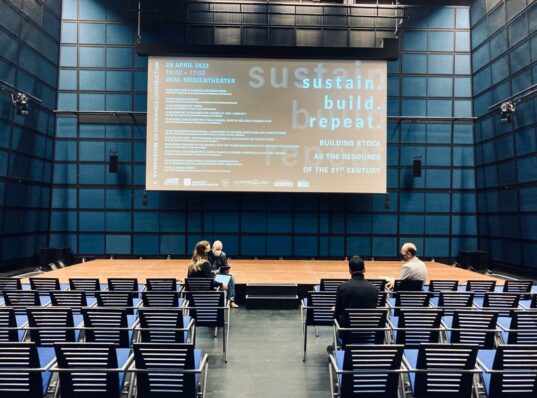
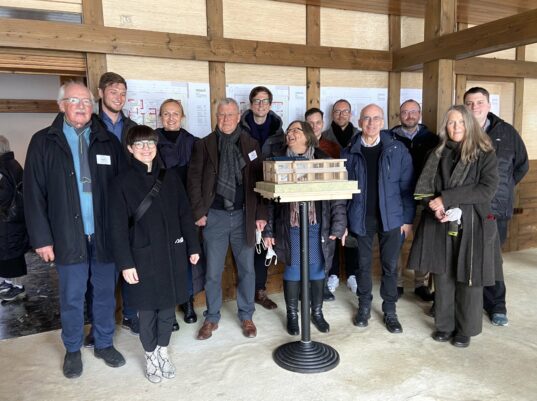
On 2 April 2022, nestbau AG Tübingen invited to an open day at the “Neschtle” in Pfrondorf. In addition to a greeting by Gunnar Laufer-Stark from nestbau AG and the presentation of the timber construction planned on site in Pfrondorf (architecture bürohauser), the event also included a small exhibition of student work from the design course “(H)Austausch!”, which was created in the winter semester 2020/21 at KIT.
The students dealt with the question of how a synergetic solution can be found for the two coinciding phenomena of housing shortage (e.g. for young families who need space) on the one hand and housing overflow (e.g. due to changed life situations such as children moving out, widowhood, etc.) on the other. Architectural ideas were developed on how such a “house swap” could look like: Close-to-the-environment, adapted, attractive, but also sufficiency-oriented living space for people who are willing to leave their flats and houses that have become too big.
Daniel Lenz represented the Chair of Sustainable Building and, together with the students present, answered questions from the visitors.
(de)
Am 2. April 2022 lud die nestbau AG Tübingen zum Tag der offenen Tür ins “Neschtle” nach Pfrondorf. Die Veranstaltung umfasste neben einem Grußwort von Gunnar Laufer-Stark von der nestbau AG und der Präsentation des am Ort in Pfrondorf geplanten Holzbaus (Architektur bürohauser) auch eine kleine Ausstellung der Studierendenarbeiten des Entwurfskurses “(H)Austausch!”, der im Wintersemester 2020/21 am KIT entstand.
Die Studierenden beschäftigten sich mit der Frage, wie für die beiden zusammentreffenden Phänomene Wohnungsknappheit (z.B. für junge Familien, die Platz benötigen) auf der einen Seite und Wohnraumüberfluss (z.B. durch veränderte Lebenssituationen wie Auszug der Kinder, Verwitwung, etc.) eine synergetische Lösung gefunden werden kann. Es wurden dabei architektonische Ideen entwickelt, wie solch ein “Haustausch” aussehen könnte: Umfeldnaher, angepasster, attraktiver, aber auch suffizienter Wohnraum für Menschen, die dafür bereit sind ihre zu groß gewordenen Wohnungen und Häuser zu verlassen.
Daniel Lenz vertrat die Professur Nachhaltiges Bauen und stand zusammen mit anwesenden Studierenden den Besuchern Frage und Antwort.
An exhibition by the Vitra Design Museum, V&A Dundee and maat, Lisbon
The Vitra Design Museum in Weil am Rhein presents the exhibition ‘Plastic: Remaking our World’ as an exploration of the history and future of the controversial material. Plastics have symbolized a world of carefree consumerism and revolutionary innovation, opening the doors for designers and architects for decades. Of course today, the dramatic consequences of the plastic boom have become so obvious that the material has lost its utopian connotation.
The exhibition begins with a large-scale video installation spotlighting the conflicts linked to the production and use of plastic. Timeless images of unspoilt nature are juxtaposed with film documents from one hundred years of plastic industry that convey the ambiguous fascination of increasingly fast-paced automated production at rapidly diminishing costs. The formation of fossil resources such as coal and oil took more than two hundred million years, while the synthetic materials made from them needed little more than a century to become a problem of planetary scale.
The second part of the exhibition describes the evolution and the shifting perceptions of plastics from their beginnings in the mid-nineteenth century to their global omnipresence today. The first plastic materials were plant- or animal-based: for centuries, horn and tortoiseshell were used to create drinking vessels and to embellish cutlery. In 1907, Leo Baekeland invented the first plastic made of purely synthetic components and named it Bakelite. It was hailed as the material of infinite uses. Being nonconductive, Bakelite was soon used for light switches, wall sockets, or radio sets and played a central role in the electrification of everyday life.
While early plastics were often developed by independent inventors and tinkerers, from the 1920s onwards the expanding petrochemical industry took a leading role. This marked the beginning of an era of »petromodernity«. When industrial design emerged as a profession of its own in the 1930s, its proponents were quick to embrace the possibilities of the new materials. Also Architects began to discover plastics as a building material and in 1957 Monsanto installed the all-plastic »House of the Future« at Disneyland.
A few years later, a growing fascination with space flight shifted the focus to plastic’s utopian potential, which was reflected in futurist shapes and new interior design concepts. In the 1960s, based on the notion of convenience and fuelled by the packaging industry, the idea of single-use plastics was introduced and a new throwaway culture began to spread. The oil crisis in 1973 meant lower supplies and higher prices for the resource from which most plastics were made, but it had little long-term effect on the plastic boom. While global plastic production soon picked up again, strategies for reducing plastic waste were slow to emerge.
Today, plastics are globally omnipresent and an intricate part of our lives. Like no other, the human health sector exemplifies the plastic paradox – its positive, sometimes lifesaving qualities as well as its negative, even life-threatening impacts. The issues arising from the plastic boom have etched themselves in our collective consciousness: from microplastic in the soil, in the oceans, and in our bodies to mountains of packaging waste that are often disposed of or burnt – with immense ecological consequences on a global scale.
How can we overcome the global plastic waste crisis? And what role can design – alongside industry, consumers, and politics – play in the process? These are some fundamental questions addressed in the final part of the exhibition. In recent years, many scientists and designers have started exploring materials that are based on renewable rather than fossil resources and often referred to as bioplastics.
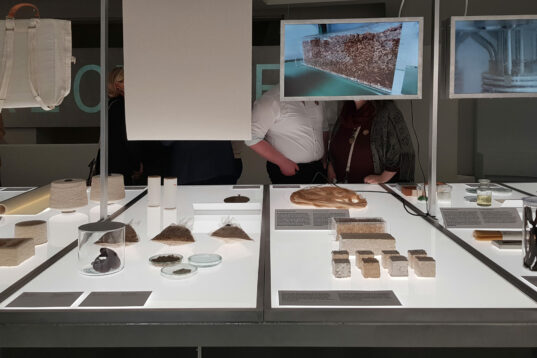
The Professorship of Sustainable Construction of the KIT Department of Architecture was asked to exhibit their ongoing research of building materials made from mycelium. Therefore the team prepared the different steps of growth of a mycelium brick to show biological alternatives for the building sector.
As a whole, the exhibition »Plastic: Remaking Our World« offers a critical and differentiated reassessment of plastic in today’s world. It aims to address the bigger picture of plastic and its complex role in our world: by analysing how we came to be so dependent on it, by reassessing where the use of plastic is essential and where it can be reduced or replaced, and by reimagining possible futures for this contested material.
The Opening Talk and the Vernissage of the exhibition took place on the 25th March 2022. It will be shown in the Vitra Design Museum until 4th September 2022 and then move to the V&A Dundee London and the maat in Lisbon. (Text: Vitra Design Museum)
An exhibition by the Vitra Design Museum, V&A Dundee and maat, Lisbon
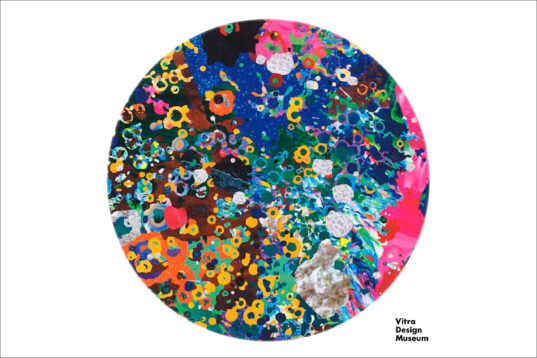
“Plastics have shaped our daily lives like no other material: from packaging to footwear, from household goods to furniture, from automobiles to architecture. A symbol of carefree consumerism and revolutionary innovation, plastics have spurred the imagination of designers and architects for decades. Today, the dramatic consequences of the plastic boom have become obvious and plastics have lost their utopian appeal. The exhibition »Plastic: Remaking Our World« at the Vitra Design Museum will examine the history and future of this controversial material – from its meteoric rise in the twentieth century to its environmental impact and to cutting-edge solutions for a more sustainable use of plastic. Exhibits will include rarities from the dawn of the plastic age and spectacular objects of the pop era as well as numerous contemporary designs and projects ranging from pragmatic product innovations to solutions for cleaning up the oceans and bioplastics made from algae or mycelium.” (Official announcement by the curators)
The Professorship of Sustainable Construction has been invited to present extracts from their mycelium research in this exhibition. The exhibition will take place at the Vitra Design Museum from 26 March 2022 to 04 September 2022.
The KIT Professorship of Sustainable Construction (Nazanin Saeidi and Alireza Javadian) was asked by the Brazilian-Swiss artist Pedro Wirz to build a human figure out of mycelium, which has since become part of his exhibition at Kunsthalle Basel.
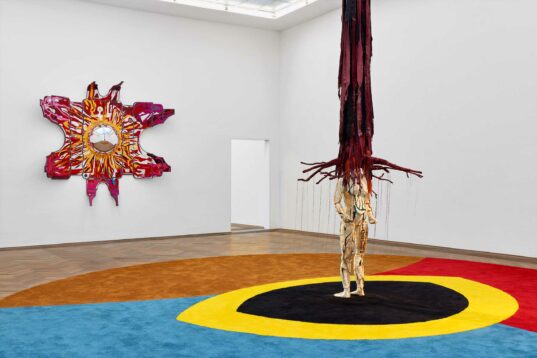
With the playful and colourful exhibition “Environmental Hangover”, the artist pleads for more sustainability. He draws attention to the fossil age in various ways and, on this occasion, also deliberately softens the boundaries between nature and technology in places. In addition, he uses the contents of the exhibition to criticise the unmistakable permanent traces that humans leave on the earth and in cities.
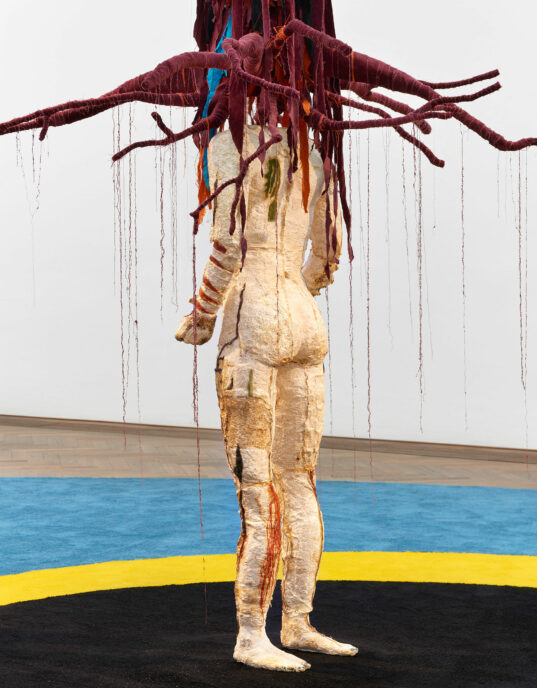
The legendary Curupira, the imposing protector of the forests and animals from mycelium, closes the exhibition. With this object, too, the artist draws attention to the importance of sustainability in all areas of life.
The exhibition can be seen in the Kunsthalle Basel until the 1st May 2022. More information on the website of the Kunsthalle Basel.
The “Solar Decathlon Europe” is one of the most important competitions for students in the field of architecture and construction. Here, in a multi-semester effort by interdisciplinary teams, solutions are to be found for the enormous challenges facing our society and its architecture.
The KIT Faculty of Architecture is participating with the RoofKIT project. The exhibition uses the project as an example to show what these challenges are and how we can face them: Radical reduction of energy consumption, circular construction, use of the city as a resource, use of renewable raw materials in modular and single-variety construction, space-saving forms of living together and intelligent concepts of urban redensification.
Exhibition Photography © Dominic Faltien
The exhibition shows in a concrete and comprehensible way how the coming generation of architects will put these ideas into practice and thus shape a more sustainable future for all of us. It can be visited from 11.01.2022 until 04.02.2022 in the Architekturschaufenster in the Waldstraße in Karlsruhe.
More information on www.architekturschaufenster.de or on polis-magazin.com.
Supported by the Holcim Foundation, the Norman Foster Foundation ‘Re-Materializing Housing’ Workshop took place from 15-19 November 2021. As the Workshop’s Mentor, Dirk Hebel, pointed out, ‘mainstream building practices are unsustainable. The construction sector uses an extensive amount of material resources and is responsible for the use of material compounds that are harmful to both humans and the environment. It is not enough to talk about more efficient steps to take within the existing systems but time for a real paradigm shift’.
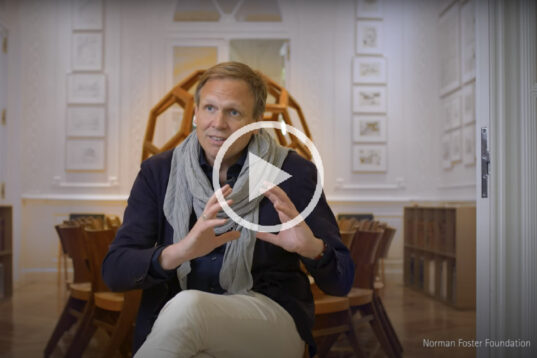
The Norman Foster Foundation’s 2021 Re-materializing Housing Workshop included seminars, lectures, one-to-one tutoring and architectural tours. The workshop consisted of a five-day event led by Dirk Hebel, Professor of Sustainable Construction, Karlsruhe Institut für Technologie (KIT).
The Workshop’s Academic Body spanned a wide range of practitioners from different fields related to architecture. This year’s Academic Body included Dirk Hebel, Professor of Sustainable Construction, Karlsruhe Institut für Technologie (KIT), Karlsruhe, Germany; Tom Bloxham, Founder and Chairman, Urban Splash, Manchester, United Kingdom; Anna Heringer, Founder and Director, Studio Anna Heringer, Laufen, Germany; Laila Iskandar, Former Minister of Urban Renewal and Informal Settlements, Cairo, Egypt; Johan Karlsson, Managing Director, Better Shelter, Stockholm, Sweden; Carme Pinós, Founder and Director, Estudio Carme Pinós, Barcelona, Spain; Stuart Smith, Director, Arup Berlin, Berlin, Germany; Brinda Somaya, Principal Architect and Managing Director, Somaya and Kalappa Consultants, Mumbai, India.
Hundreds of candidates from around the world applicated for the Workshop. The selection committee awarded ten scholarships to students from the following universities and institutions: Harvard University, United States, University of Cambridge, United Kingdom, Kamla Raheja Vidyanidhi Institute of Architecture and Environmental Studies, India, University of Stuttgart, Germany, Pontificia Universidad Católica de Chile, Chile, Massachusetts Institute of Technology (MIT), United States, Confluence Institute, France, Universidad Nacional de Córdoba, Argentina, University of Cape Town, South Africa, Namibia University of Science and Technology, Namibia.
The video about the Workshop is also available on the website of the Norman Foster Foundation.
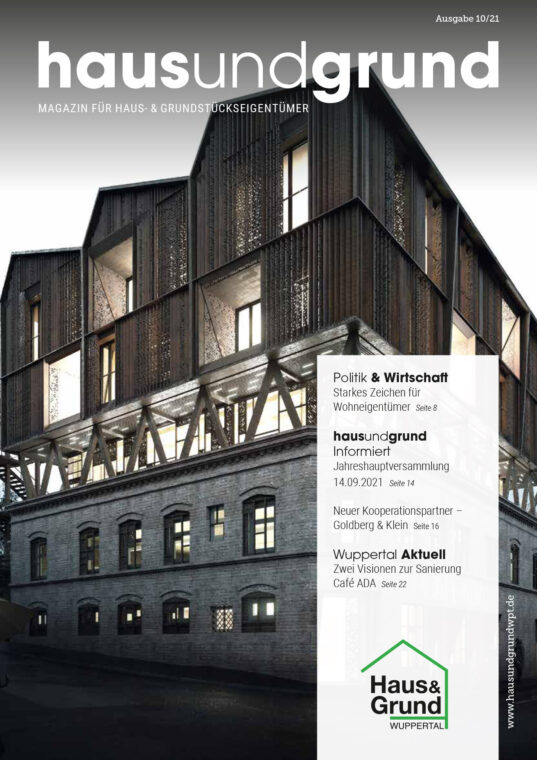
The magazine Haus und Grund Wuppertal published an article in its 10/2021 issue about two projects in the SolarDecathlon 2021, which will take place from 10 to 26 June 2022 on the Nordbahntrasse opposite Mirker Bahnhof. DETAIl also reports on the project of the Karlsruhe team RoofKIT in an online series entitled “A Future for Existing Buildings”.
The Solar Decathlon is probably the best-known international student competition on the topic of sustainable building and living. Among the projects published in this issue is Team RoofKIT’s vision for Café ADA in Wuppertal. RoofKIT is an interdisciplinary team of students from the Karlsruhe Institute of Technology (KIT), in Karlsruhe, Baden-Württemberg. The student team consists mainly of architects and engineers from the faculties of architecture and civil engineering, geosciences and environmental sciences. The team works closely with professors from various KIT faculties as well as interdisciplinary and supporting companies. An interdisciplinary core team consisting of 12 students is responsible for project management and coordination.


Model of RoofKIT © RoofKIT, KIT
Team RoofKIT is developing an urban blueprint on unused land resources in cities: the roof surfaces. The goal is to understand the city as a social factory, urban raw material store and sustainable energy producer. How can we create socio-economically fair housing without destroying our natural resources? How can we transform the building sector so that it does not exacerbate climate change? How can we run a circular construction industry?
The team provides answers to these questions using the example of Café ADA, the famous Latin American dance and event venue in the Mirke Quarter. A construction kit is developed that can find an almost universal application in the urban context and is based on new (single-variety) construction principles and materials. The direct inward redensification of urban space not only has the potential to create new living spaces in the midst of existing structures, but also the chance to optimise a neighbourhood economically, socially and energetically in the long term. The integrated energy concept is also part of the architectural and urban design. In order to be climate-neutral over the course of the year, the RoofKIT system is based on various measures, such as the use of solar energy and daylight, natural ventilation or an improvement of the urban microclimate around the building through green areas.
RoofKIT sees the city as a depot and future supplier of materials. The challenge is to develop new technologies to transform these materials into a new generation of qualitatively sustainable (i.e. ecologically harmless, technically pure and economically attractive) building materials. For precisely this reuse of building materials, single-variety construction principles are being developed that aim at a circular construction method and enable problem-free deconstruction. This allows the state of “urban mining” (urban man-made raw material storage) to be understood as a transitional phase into a true circular economy in the construction sector.
The existing café use will be expanded to include a hotel area. The dance hall will be moved from the first floor to the second. In the resulting “urban gap”, an event space for music, theatre, dance and culture will be created. It radiates into the urban environment and offers residents and users a new attractiveness. The building is completed with two residential floors; the different-sized living spaces in combination with communal areas offer a high-quality living space.
More information about RoofKIT on their Website or their podcast Fighting 40%.
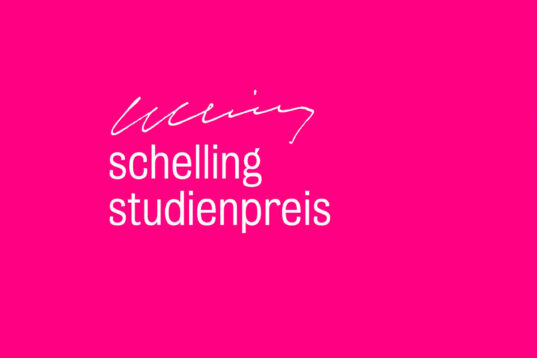
The Schelling Studienpreis is the student counterpart of the renowned Schelling Architekturpreis, which is awarded every two years by the Schelling Architecture Foundation in Karlsruhe to international architects. The study prize was awarded for the first time in 2015.
This year, nine former students who completed their Master’s degree in the past two years have been nominated. The main award is endowed with 2,000 euros.
Three of the nine nominated master’s theses were submitted to the Professorship of Sustainable Construction. These included the thesis by Hanna Wollny entitled “Gebäude als Materialressource – Am Beispiel eines temporären Hörsaalgebäudes” (Hebel/Wagner) from the winter semester 2019/20, the thesis by Caterina Goerner from the summer semester 2020, who entitled her thesis “Nordschwarzwald Regional – Von der Ruine zur Mine” (Hebel/Wagner), as well as the thesis by Fanny Hirt, who dealt with “Kaufhaustransformation – Neudefinition der Heidelberger Innenstadt” in the winter semester 2020/21.
At the award ceremony on the evening of 25 November 2021, the Master’s theses of Hanna Wollny and Fanny Hirt were each awarded recognition of the Schelling Studienpreis. Clara Süßmann received the Schelling Studienpreis for her Master’s thesis entitled “Auf Schatzsuche im Schwarzwald – Mineralienspeicher Grube Clara”, which was supervised by Prof. Wappner and Prof. Rambow in the summer semester of 2020.
Congratulations to all the laureates! More information on arch.kit.edu.
Mycelium-bound materials would play a significant role in mitigation of adverse climate change effect imposed by material consumption and resource scarcity. This paper, published by KIT researchers in scientific reports as part Nature publishing group, proposes dense mycelium-based composites (DMCs) as a potential green alternative to traditional particleboards.
Mycelium, as the root of fungi, is composed of filamentous strands of fine hyphae that bind discrete substrate particles into a block material. With advanced processing, dense mycelium-bound composites (DMCs) resembling commercial particleboards can be formed.
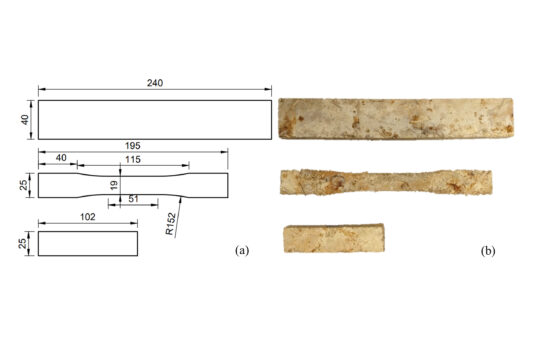
In this paper the research team including Dr. Nazanin Saeidi, Dr. Alireza Javadian, and Prof. Dirk E. Hebel from the chair of Sustainable Construction at KIT, Karlsruhe, Germany in collaboration with Urban Biocycle project at FCL global and Xin Ying Chan and Prof. Manoj Gupta from NUS, Singapore have investigated the possibility of using DMCs as a green alternative to particleboards.
A detailed investigation was carried out on the mechanical properties and performance of DMCs under the working conditions of particleboards. The DMC was made using Ganoderma lucidum mycelium grown on a substrate of sawdust and empty fruit bunch collected from the waste byproducts of Sawmills and Palm oil factories. The DMC was then subjected to weathering under tropical conditions over 35 days and tested under flexural, tensile, and compressive loading with reference to international standards. The results over the weathering period reveal that weathering reduces the strength and rigidity of the material.
However, by application of a commonly used natural oil-based coating DMC was able to withstand degradation under tropical weathering conditions. Furthermore, it was shown that some improvements to the material’s consistency could effectively increase the material strength and resistance to weathering with the help of a protective coating. Therefore, DMC could be a promising material as an environmentally friendly substitute for particleboards if such improvements in material production are made.
More information about the scientific report on nature.com.
The Building Sense Now Global Award was presented at a digital award ceremony on November 11, 2021 with the participation of the German Sustainable Building Council (DGNB) and in the course of the world climate conference COP26. The Award is looking for new, innovative design strategies from around the world that want to achieve ambitious goals and deal with climate change and sustainability issues. The award is given to work that has made a difference and has shown special qualities on all levels and scales. This award focuses on architects and their design process as well as the philosophical and ethical questions – not just the final solution in the built project. The initiative seeks disruptive thinking that shows the potential to address large-scale problems in a variety of areas, such as: buildings, urban renewal and transformation projects, urban systems and ecosystems, and people-centered urban design.
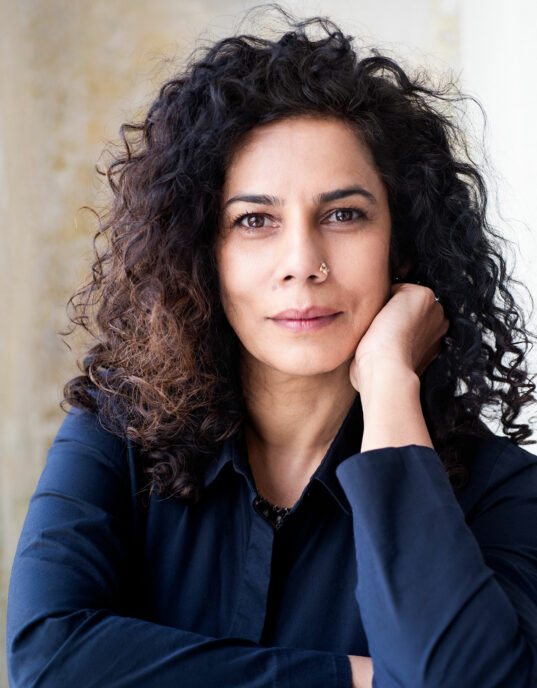
This year, the award went to the Indian architect Prof. Dr. Anupama Kundoo. She was honoured for her commitment to climate and culture-friendly construction. She has already implemented more than 100 projects with her offices in Pondicherry and Berlin, most of them in India. She currently holds a Guest Professorship at Faculty of Architecture at the Karlsruhe Institute of Technology KIT together with Maarten Gielen of RotorDC and a Professorship for Structural Design at the Potsdam University of Applied Sciences. She currently offers a master’s design course at KIT Faculty of Architecture on the topic “Circularity: Architecture as a Mechanism of Waste Capture”.
The Green Solutions Awards ceremony took place in Glasgow on Wednesday 10 November 2021. The competition, organised by the international Construction21 platform, rewards outstanding architectural projects that address the challenges of climate protection and sustainability in an innovative way. Winners were selected from 192 entries from 25 countries in eight categories. 16 other projects received recognition from the jury, which is made up of experts in sustainable construction from around the world.
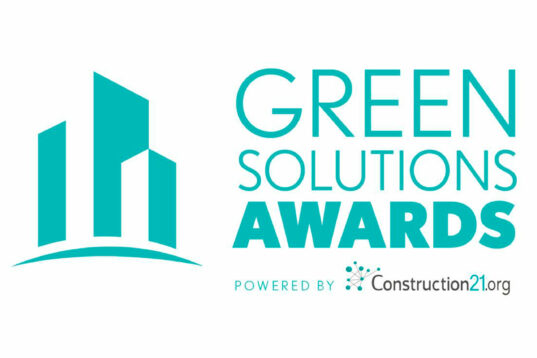
The jury was particularly impressed by these projects because they address the key issues of sustainable construction: economy of materials, energy efficiency, health and user comfort, off-site prefabrication, protection of biodiversity and species, circular economy, and many more. They were also selected because they have the potential to inspire building sector professionals and be adapted and developed on a large scale.


The Mehr.WERT.Pavillon – Top View © Jonathan Preker Copterbrothers, Side view © Felix Heisel
The Mehr.WERT.Pavillon, built up on the Bundesgartenschau 2019 in Heilbronn, was awarded the Sustainable Infrastructure Grand Prize. The building proved that it is already possible today to design and realise sophisticated architecture entirely from the materials of the urban mine, and to apply the principles of the circular economy in its construction without compromise. The materials used for the construction were all selected according to these requirements and joined only with the help of detachable, mechanical connections, so that they can be completely reused or recycled without any loss of value. However, the structure was so convincing that it has now been completely relocated for the time being after the end of the exhibition and will continue to exist for a few more years near its original location – as a material storage facility, social meeting place and physical proof that it is already possible to build in a cycle-friendly manner today.
The jury of the Green Solutions Awards 2020-21 stated: “By betting on the circular economy, it shows how urban areas can be sources of materials. The Mehr Wert Pavilion in Germany is built entirely from recycled materials and can be completely dismantled. A feat in terms of sobriety that should send a signal to all planners and builders.”
The aim of the pavilion was and is to discuss important questions of future building and the associated use of resources with decision-makers from politics, building planning and implementation, and to develop new innovative concepts, applications and methods from this, both in practice and in teaching.
The Ministry for the Environment, Climate Protection and Energy Sector Baden Württemberg has produced a film about the development process of the Mehr.WERT.Pavilion from planning to construction, which can be viewed here.
Recruitment from December 2021 or January 2022
If interested, please email elena.boerman@kit.edu.
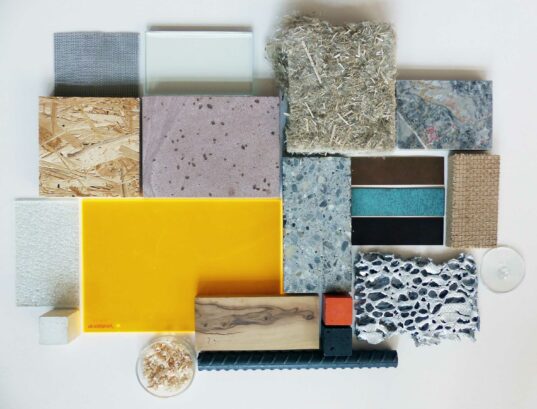
Dear students,
the Materials Library is looking for support to continue building up its database. A dedicated team is working here cooperatively and meets regularly to exchange ideas.
Main tasks in the beginning:
– Building up the website of the KIT materials library
– Editing material photographies for the material data sheets
Further tasks:
– Active cooperation in building up the database, analysing and improving the structure.
– Researching building materials
– Evaluating the research results and transferring them into comprehensive material data sheets
The job requires you to work independently and on your own responsibility. You will be actively involved in the team. Basic skills in Excel, Photoshop and Webdesign are required.
If you are interested, please send an e-mail to elena.boerman@kit.edu. In the e-mail, you are welcome to introduce yourself briefly and explain in one or two sentences why you are interested in the position (also in German).
If you have any questions in advance, please contact me via email.
The recruitment is scheduled for December 2021 or January 2022.
31 October was the “Welttag der Städte” (“World Day of Cities”). Fittingly, the architectural models of the Solar Decathlon Europe 21/22 of the Bergische Universität Wuppertal are exhibited at prominent locations in Wuppertal. They can be viewed there in the coming days and weeks.
The two models of the KIT Karlsruhe SDE team RoofKIT can be visited in the codeks in Wuppertal-Elberfeld.
The “Welttag der Städte” (“World Day of Cities”) on 31 October is a call by the United Nations to work together for sustainable strategies for cities. Currently, about 75% of buildings in the EU are not energy efficient. They cause 36% of CO2 emissions. Increasing the energy efficiency of buildings not only saves heating costs, but also protects our climate.
This is exactly where the Solar Decathlon comes in. Together with local partners, Bergische Universität Wuppertal has managed to bring the most important international university competition for energy-efficient building and living to Wuppertal.
With the travelling exhibition, the models are now coming to the people of Wuppertal. From February/March 2022, they will be exhibited throughout NRW. From 10-26 June 2022, all interested parties are cordially invited to experience the built houses and the event and cultural programme live.
The Scientists for Future podcast features monthly conversations with scientists about climate change, sustainability and a livable future.
The building sector is responsible for around 40% of CO2 and greenhouse gases in Europe. The Scientists for Future took this initial situation as an opportunity to join forces with the Architects for Future and dedicate an episode of their podcast to the topic of architecture. To do so, they invited Prof. Dirk Hebel from Professorship of Sustainable Construction at the Karlsruhe Institute of Technology.

“We have to understand our buildings as material stores,” he describes. In addition to the question of raw material consumption and the circular economy, the current podcast episode also talks about urban planning and the new European Bauhaus. Svenja from S4F and Leonie from A4F Kassel also discuss with their guest how architecture and our coexistence must change for a sustainable future. Because it turns out: How we build is not only a technical question but also a cultural one.
The current episode of the Scientists-for-Future-Podcast “Sustainable Architecture” is available here.
In this year’s third edition “BAUEN” of the KIT magazine for research, teaching and innovation “lookKIT”, three different articles report on research and other topics taking place at the Professorship of Sustainable Construction at the Karlsruhe Institute of Technology.
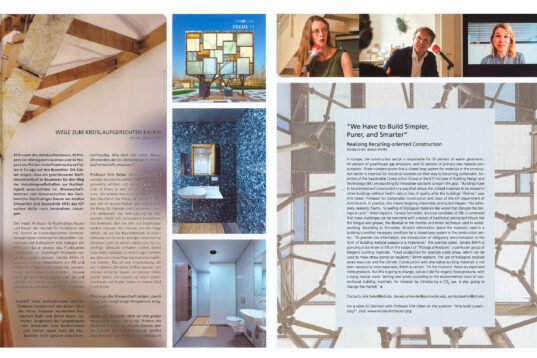
Under the title “Realizing recycling-oriented Construction”, Dr. Stefan Fuchs conducted an interview with Prof. Dirk E. Hebel, Sandra Böhm and Daniela Schneider from the Professorship of Sustainable Construction. The topics of the conversation range from the protection of resources to the problem of land consumption and the need for new forms of living. According to the researchers, in order to anchor the circular economy in construction, it is also necessary to use biological materials in order to close the resource gap.
The spread of such materials can be promoted by including environmental costs in materials of fossil origin. In addition, architects have to start planning again with traditional and other simple joining techniques in order to ensure the correct use and quality-preserving dismantling of materials. Hebel, Böhm and Schneider place great hopes in the introduction of a material pass to anchor digitization and documentation in the construction industry. Finally, the author also points out a video with Prof. Dirk E. Hebel on the question “Why build sustainably?”.
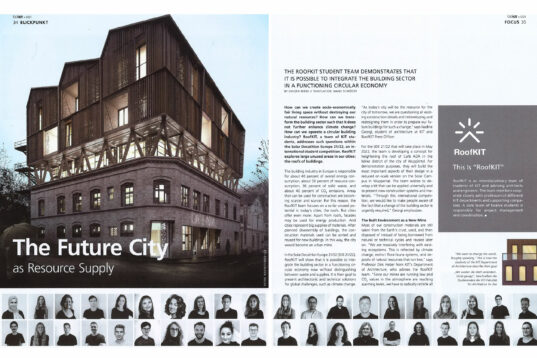
In “The Future City as Resource Supply” by Sandra Wiebe, the RoofKIT team demonstrates that it is possible to integrate the building sector in a functioning circular economy. Taking part in the Solar Decathlon Europe 2021/22 the team is developing a concept for heightening the roof of Café ADA in Wuppertal. In a reduced on-scale version, they will realize their project on the Solar Campus in Wuppertal in June 2022.
The project is composed of three important topics of the implementation of circular economy in the construction sector: to use the built environment as a new mine, to enable buildings to be fully disassembled after use and to harvest energy sustainably in order to reach climate neutrality. According to the head of project Prof. Dirk E. Hebel, RoofKIT’s design is of relevance to novel, socially centered living spaces supporting future-oriented urban society.
An online version of the article is available here. Find out more about the RoofKIT team here.
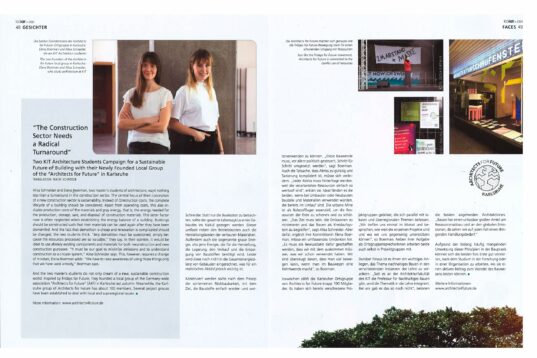
Two architecture students campaign for a sustainable future of the construction sector as a whole with their newly founded local group of the “Architects for Future” in Karlsruhe. Alisa Schneider and Elena Boerman both did their master thesis on adaptive reuse projects at the Professorship of Sustainable Construction in summer 2021.
The author of the article, Regina Link, points out their central focus of a radical turnaround in the construction sector. In the name of their Germany-wide association, the two graduates call on people to consider the entire life cycle of buildings and thus break through the linear system of construction. Society must become aware of the value of buildings and the resources they contain: The goal must be to make building and rebuilding a circular system in which waste no longer exists and materials are used in and removed from buildings for reuse and recycling.
An online version of the article is available here. Find out more about the association Architects for Future here.
The climate podcast WELTWUNDERKUGEL from SWR deals with topics related to the function of our planet. The makers are interested in understanding what defines our earth and the climate and how we can hand over a healthy earth to future generations.
The current episode “A home for the future – climate-friendly building and living” is about sponge cities, high-rise forests, eco-villages and biological building materials. In the search for the “Home of the future”, voices from science and society are heard and various projects on the topic are presented by the SWR1 editor Christiane von Wolff.
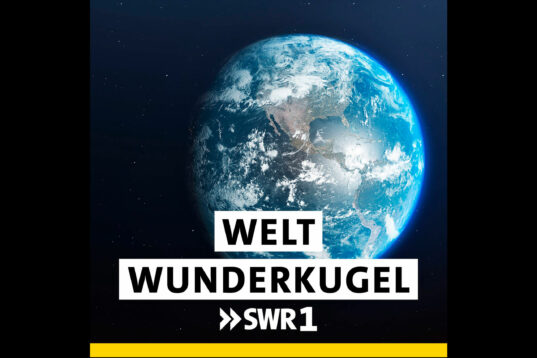
In this context, Dirk E. Hebel from the KIT Professorship of Sustainable Construction addresses the idea of sustainable development. He also reports on the many possible uses of mushroom-based materials in the construction industry and on dealing with today’s building stock. “Garbage as a design error” is the keyword here: it is important to understand that the consistent recycling economy in the construction industry is the only way to seriously implement resource conservation in the construction industry.
Listen to the full episode here.
How do we want to live in the future? And how can we also be sure in the future that there will be enough raw materials to provide everything needed in daily life? Clari, Jana, Ralph and André from the “Sendung mit der Maus” are looking into securing raw materials and urban mining.
For this purpose, they are opening a future flat-sharing community for four weeks in the Urban Mining and Recycling Unit in the NEST research building on the EMPA campus in Dübendorf, and from there they are exploring where and how the various components of the research unit were produced.
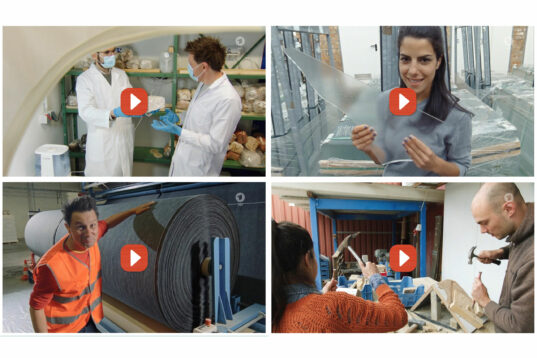
The first part is about the recycling of bricks into new masonry units. The focus is also on the MycoLab of the KIT in Karlsruhe and the production of insulating material from mycelium there. The second episode shows the viewers the production process of glass ceramics and plate material from melted plastic. The third episode deals with the production of table tops from used beverage cartons and with recyclable carpets. The fourth episode focuses on technical innovations and the deconstruction of materials from urban mining.
The four-part series “Urban Mining” from the “Sendung mit der Maus” conveys an understanding of the responsible use of our raw materials in a child-friendly way.
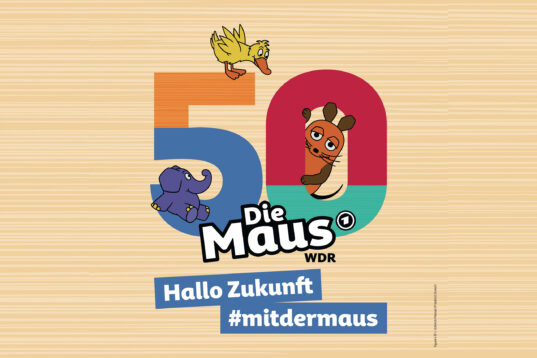
At the “Door opener day with the mouse”, the 3 October 2021, upcoming ideas, innovative plannings, exciting projects and much more will be presented to children under the motto “Hello Future” all over Germany. One of the numerous participatory activities will take place at the KIT in Karlsruhe.
At the MycoLab at KIT, the Professorship of Sustainable Construction at the Faculty of Architecture, Prof. Dirk Hebel, is conducting research on alternative building materials. The team is working on the conversion of organic waste into alternative, cultivated and biological building materials. This involves the use of mycelium, the route of mushrooms, which is fed with biological waste so that stable, pressure-resistant forms can subsequently be realized.
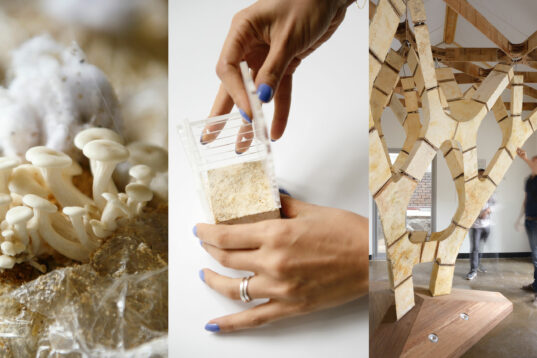
The MycoLab has already been featured by ZDF PUR+ last year, and in the program “Sendung mit der Maus” on its 50th anniversary a few months ago.
On the “Door opener day” the MycoLab team aims to show the participating children how alternative sustainable resources can be regrown faster than wood without any negative impacts on our forests and biodiversity as well as our climate by utilizing the wood and agricultural waste resources and turning them into sustainable, biobased and green building materials with the power of mushrooms.
To join the event, please registrate here.
On the occasion of the 50th birthday of “Die Maus”, numerous special episodes are being filmed this year. In this context, “Die Sendung mit der Maus” also visited the Urban Mining and Recycling (UMAR) housing and research unit of the Swiss research institute Empa at “NEST” in Dübendorf near Zurich in Switzerland.
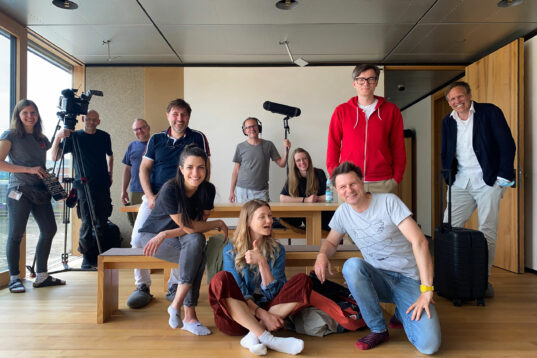
In the middle of June, NEST Innovation Manager Enrico Marchesi invited Prof. Dirk E. Hebel and Sandra Böhm from the Professorship of Sustainable Construction to present the housing unit, the building materials used there, and the construction and material concept to the viewers of the “Sendung mit der Maus” after a brief welcome. The Urban Mining and Recycling Unit of the EMPA is still one of a few lighthouse projects of circular construction. Many innovative, forward-looking construction techniques are used in exemplary applications, which allow the sorted disassembly and the later reuse of all used materials. The unit was created in 2017 by Werner Sobek with Dirk E. Hebel and Felix Heisel, Bernd Köhler and Frank Heinlein.
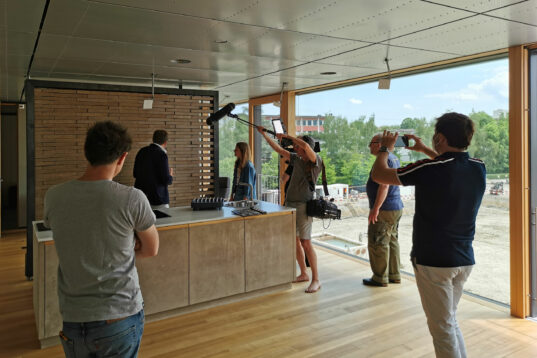
Ralph, Jana, Sihan, André from “Die Sendung mit der Maus”, Prof. Dirk E. Hebel, Sandra Böhm and Enrico Marchesi were present for the filming session in the Urban Mining and Recycling Unit at NEST at EMPA in Dübendorf, Switzerland. The programme will be broadcast as a special episode as part of the Mouse’s 50th birthday events in August 2021.
More information about the 50th birthday of “Die Maus” here.
In the current episode of NANO, a scientifical documentation series by 3sat, the Urban Mining and Recycling Unit of the EMPA in Zurich has been published as one of the lighthouse projects of sustainable construction. The presenters also visit the KIT mycelium laboratory at the Westhochschule where the fungal mycelium is researched by Prof. Dirk E. Hebel and his team.
The short contribution shows the inevitable relevance of an increased use of recycled materials and renewable raw materials as the basis for the building materials of the future.
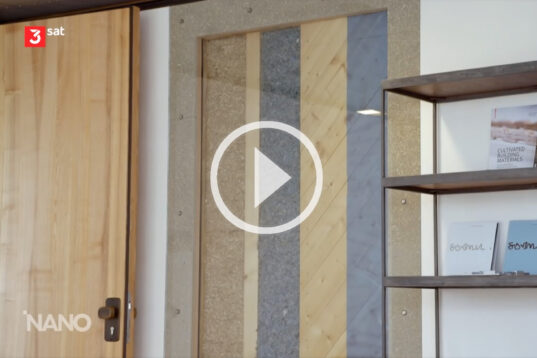
Watch the full episode of NANO on 3sat here.

Recruitment from 1 September 2021
If interested, please email sandra.boehm@kit.edu by 1 July.
Dear students,
the Materials Library is looking for support to continue building its database. A dedicated team is working here cooperatively and meets regularly to exchange ideas – currently still online, hopefully soon live and in colour again.
Tasks:
– Active cooperation in building up the database, analysing and improving the structure.
– Researching building materials
– Evaluation of the research results and their transfer into comprehensive material data sheets.
The job requires you to work independently and on your own responsibility. You will be actively involved in the team. If you are interested, please send an e-mail to sandra.boehm@kit.edu by 1 July. In the e-mail, you are welcome to introduce yourself briefly and explain in one or two sentences why you are interested in the position.
If you have any questions in advance, please contact Thomas Kinsch (thomas.kinsch@kit.edu).
You will then receive initial feedback from us from 5 July.
The recruitment is scheduled for 1 September.
Regina Gebauer and Anne-Catherine Greiner are two of a total of ten winners of the aed neuland 2021 young talent competition in the Architecture and Engineering category. They each received the silver award for their semester designs, which were both created at the Professorship of Sustainable Construction at the Karlsruhe Institute of Technology and were supervised by Prof. Dirk E. Hebel, Manuel Rausch and Daniel Lenz.
In her project “Bis sich alles bewegt” (“Until Everything Moves”), Regina Gebauer deals with the inward densification of urban spaces in European city centres in an exemplary manner in terms of sustainability. The addition to an existing building in Wuppertal with the clear formulation of the joint between old and new convinced the jury. With the consistent implementation of the themes of circular economy in construction, single-variety construction and the Urban Mine, it demonstrates a self-confident architectural stance.
Find out more about the project here.
Anne-Catherine Greiner proposes a playful solution for the Mea Nork kindergarten of the NGO “Smiling Gecko” near Phnom Penh in Cambodia as an extension of the existing school. Taking into account climatic conditions and honouring local community and ecosystems, the organic structure offers children the opportunity to learn with and from each other. By using natural materials and applying local building traditions, it shows a way to address environmental and social issues through architecture.
Find out more about the project here.
More information about the competition and all winners here.
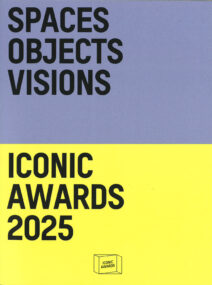
Dietzold, Lutz, ed. Iconic Awards 2025 – Spaces Objects Visions. Frankfurt: Rat für Formgebung GmbH, 2025.
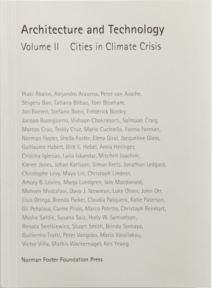
Hebel, Dirk E. “Activating the Urban Mine.“ In Architecture and Technology Volume II: Cities in Climate Crisis. Madrid: Norman Foster Foundation Press, 2025.

Hebel, Dirk E. und Felix Heisel. “Die Stadt als Ressource.” In Für eine nachhaltige Architektur der Stadt. Berlin: Verlag Klaus Wagenbach, 2025.
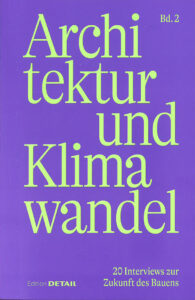
Hebel, Dirk E. “Vom Linearen Zum Kreislaufsystem.” In Architektur Und Klimawandel. München: Edition DETAIL, 2025.
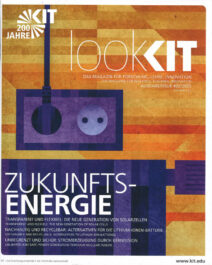
Hebel, Dirk E. Interview: “Wir müssen endlich anfangen, den CO2-Ausstoß zu messen – nicht nur, wie dick die Dämmung ist.” Interview by Christoph Karcher. LooKIT 0225, 2025.
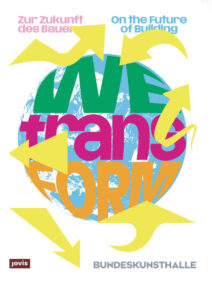
BUNDESKUNSTHALLE, ed. WEtransFORM – Zur Zukunft Des Bauens. Berlin: jovis Verlag, 2025.
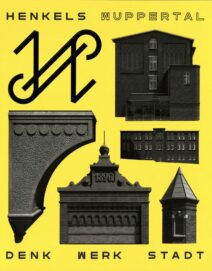
Renaissance AG, ed. Henkels Wuppertal – DenkWerkStadt. Wuppertal: renaissance Immobilien und Beteiligungen Aktiengesellschaft, 2025.
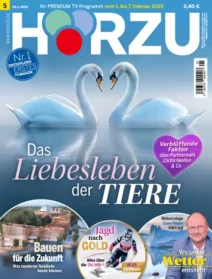
Monkenbusch, Helmut. „Bauen für die Welt von morgen.“ Hörzu, 24.1.2025
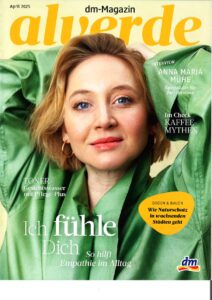
Hebel, Dirk E., Tanja Hildbrandt. „ Pilze – Netzwerker im Untergrund“. alverde, dm-Magazin, April 2025.
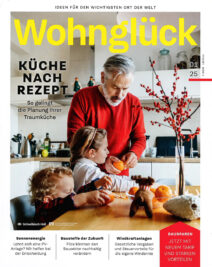
Merkert-Andreas, Carolin. “Pilze Sind Vielseitig.” Wohnglück, January 2025.
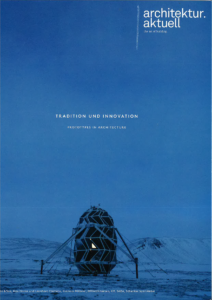
Boerman, Elena, and Dirk E. Hebel. “RoofKIT – Kohlenstoffspeicher Und Materiallager.” Architektur.Aktuell, vol. 12.2024, no. Tradition und Innovation, Dezember 2024, pp. 98–109

Hebel, Dirk E. Interview: “Vom linearen zum zirkulären Kreislaufsystem.” Interview by Sandra Hofmeister, DETAIL 11.2024, Nov. 2024.

Hebel, Dirk E., Sandra Böhm, Elena Boerman, Hrsg. Vom Bauen mit erneuerbaren Materialien – Die Natur als Rohstofflager. Stuttgart: Fraunhofer IRB Verlag, 2024.
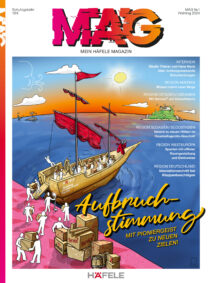
Hebel, Dirk E. “In Kreisläufen denken, entwerfen und wirtschaften.” MÄG – Mein Häfele Magazin, 2024.
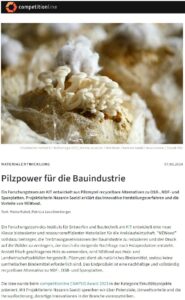
Rubel, Maike, and Patricia Leuchtenberger. Interview: “Pilzpower für die Bauindustrie.” competitionline, 7 June 2024, https://www.competitionline.com/de/news/schwerpunkt/pilzpower-fuer-die-bauindustrie-7283.html.
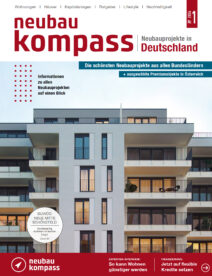
Müller, Janek. “Baumaterialien der Zukunft: Pilze, Hanf und Algen.” neubau kompass – Neubauprojekte in Deutschland, May 3, 2024. https://www.neubaukompass.de/premium-magazin/.
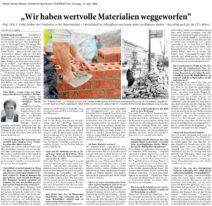
Sören, S. Sgries. “Interview: ‘Wir haben wertvolle Materialien weggeworfen.’” Rhein-Neckar-Zeitung, April 27, 2024, SÜDWEST I 28 edition, sec. Sinsheimer Nachrichten.

Schweikle, Johannes. “Auf Pilz gebaut.” Stuttgarter Zeitung, April 23, 2024, sec. Die Reportage.
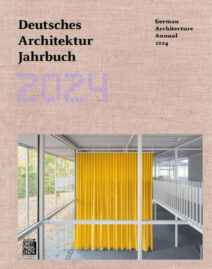
Klaaßen, Lars. “Organische Architektur – Pilzmyzel und Flachs als Materialien für die ökologische Bauwende.” In Deutsches Architektur Jahrbuch 2024, edited by Peter Cachola Schmal, Yorck Förster, and Christina Gräwe, 198–209. Berlin, Germany: DOM publishers, 2024.
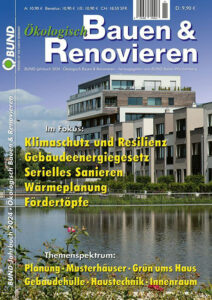
Streiff, Peter. “Zirkuläres Bauen – Kreislauf statt Abriss.” BUND-Jahrbuch – Ökologisch Bauen & Renovieren 2024, January 2024.
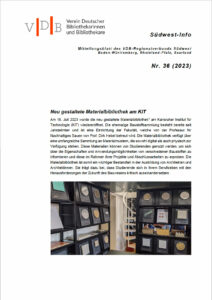
Mönnich, Michael, and Sandra Böhm. “Neu gestaltete Materialbibliothek am KIT.” Südwest-Info: Mitteilungsblatt des VDB-Regionalverbands Südwest Nr. 36 (2023), 2023.
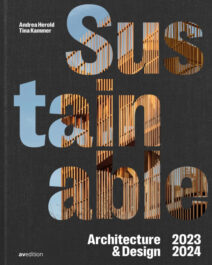
Hebel, Dirk E. “RoofKIT Wuppertal, Germany; Interview with Prof. Dirk Hebel: The aim is clear, we must forge the path ourselves.” In Sustainable Architecture & Design 2023/ 2024, edited by Andrea Herold, Tina Kammerer, and InteriorPark., 46–55. Stuttgart, Germany: av edition GmbH, 2023.
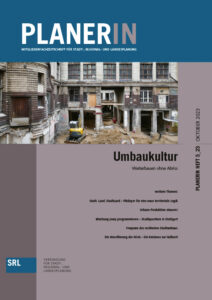
Hebel, Dirk E. “Der Bestand ist die künftige Ressource – Den linearen Umgang mit Baumaterialien schnellstmöglich stoppen.” Planerin – Mitgliederfachzeitschrift für Stadt-, Regional- und Landesplanung, Oktober 2023.
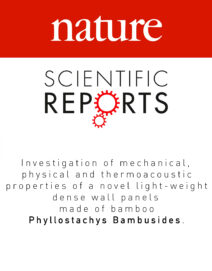
Gholizadeh, Parham, Hamid Zarea Hosseinabadi, Dirk E. Hebel, and Alireza Javadian. “Investigation of Mechanical, Physical and Thermoacoustic Properties of a Novel Light-Weight Dense Wall Panels Made of Bamboo Phyllostachys Bambusides.” Nature Sientific Reports 13 (October 26, 2023). https://doi.org/https://doi.org/10.1038/s41598-023-45515-3
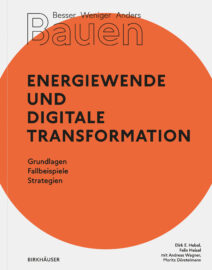
Hebel, Dirk E., Felix Heisel, Andreas Wagner, und Moritz Dörstelmann, Hrsg. Besser Weniger Anders Bauen – Energiewende und digitale Transformation. Besser Weniger Anders Bauen 2. Basel: Birkhäuser Verlag GmbH, 2023.
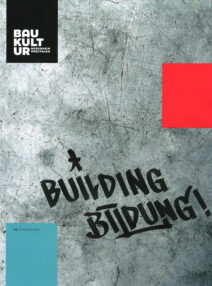
Hebel, Dirk E. “Vom Jagen, Züchten Und Ernten Zukünftiger Baumaterialien.” Baukultur Nordrhein Westfalen, September 2023.
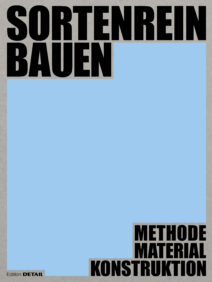
Hebel, Dirk E., Ludwig Wappner, Katharina Blümke, Valerio Calavetta, Steffen Bytomski, Lisa Häberle, Peter Hoffmann, Paula Holtmann, Hanna Hoss, Daniel Lenz and Falk Schneemann, eds. Sortenrein Bauen – Methode Material Konstruktion. Edition DETAIL. München: DETAIL Business Information GmbH, 2023.
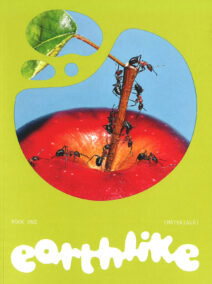
Schweikle, Johannes. “Fungi.” In Earthlike, 1:70–75, 2023.
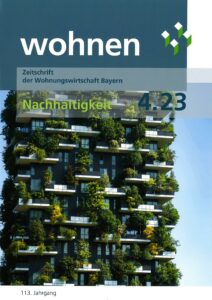
Hebel, Dirk E. “Die Stadt als Rohstofflager.” wohnen – Zeitschrift der Wohnungswirtschaft Bayern, August 2023.
Hebel, Dirk E. “Das RoofKIT-Gebäude der KIT Fakultät für Architektur – Gewinner des Solar Decathlon 2021/22 in Wuppertal.” wohnen – Zeitschrift der Wohnungswirtschaft Bayern, August 2023.
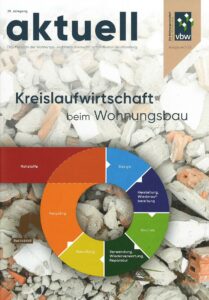
Hebel, Dirk E. “Die Stadt Als Rohstofflager.” Aktuell – Das Magazin Der Wohnung- Und Immobilienwirtschaft in Baden-Württemberg, 2023.